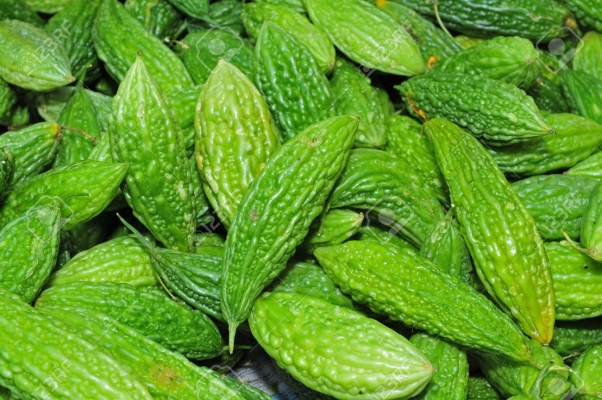Pusa Do Mousami: Suitable for summer as well as kharif season. Fruits are medium, long and green. Ready for first picking in 55days after sowing. It gives an average yield of 48-50qtl/acre.
Coimbatore long: Long, green variety. Ready to harvest in 120days. Gives average yield of 32-40qtl/acre.
ArkaHarit: Fruits are shiny green. Ready to harvest in 120days after sowing. Fruits with less seed and with less bitterness. Gives average yield of 52qtl/acre.
VK 1-Priya: Its fruits are extra-long, ready to harvest in 61 days after sowing. Heavy bearing variety.
PusaVishesh: Dwarf variety. Fruits are medium long with thick skin. Suitable for vegetable and pickle purpose. Gives average yield of 48-52qtl/acre.
MBTH 101: Ready to harvest in 55days. Fruits are 18-20cm long. Dark color fruits with 40-50qtl/acre.
MBTH 102: Ready to harvest in 50-60days. Fruits are 18-20cm long. Dark color fruits with 48-56qtl/acre.
Other state varieties:
Phule Green gold: Green color, 25-30cm long fruits. Gives average yield of 90qtl/acre.
Hirakani: Fruits are 15 to 20cm long. Gives average yield of 50qtl/acre.
Phule Priyanka: Hybrid variety having 20-25cm long fruits. Fruits are dark green in color. Gives average yield of 80qtl/acre.
Phule Ujwala: Suitable for export having 18-20cm long.
Kokan Tara: Fruits are dark green and 15cm long. Gives average yield of 60-80qtl/acre.
Priya: Fruits are near about 40cm long. Ready for first picking in 60days after sowing.
Pusa Hybrid 2: Minimum long, thick and glossy green fruits.
Kashi Urvashi: Fruits are straight and green color. Ready for first picking in 60days after sowing. Gives average yield of 120qtl/acre.
NS 1018: Short, spindle shape, dark green color fruits. Ready for first picking in 45-50days after sowing. Gives average yield of 80-100qtl/acre.
NS 1020: High yielding hybrid suitable for long transport. Gives average yield of 85 to 105qtl/acre.
NS 461: Gives average yield of 70-80qtl/acre.
Green crocodile: Ready to first picking in 60 to 65days after transplanting. Resistant to downey and powdery mildew. Gives average yield of 72 to 88qtl/acre.
Kashi Harit: Fruits are dark green. Ready for first harvest in 50days after sowing. Gives average yield of 120qtl/acre.
Pant Karela 1: Fruits are thick. Ready to harvest in 55days. Gives average yield of 60qtl/acre.
Pant Karela 2 and Pant Karela 3
CO 1:The variety has medium sized fruit which are long and dark green in color. The fruits have an average weight of 100-120gm. It gives an average yield of 5.8t/acre and the variety matures in 115 days.
MDU 1:The fruit are 30-40cm in length and matures in 120-130 days. It gives an average yield of 13-14t/acre.
Punjab Kareli-1: Released in 2009. The variety has green leaves which are smooth and serrated. They bear long fruits which are thin and green in color. First fruit harvesting is done after 66 days. The fruits have an average weight of 50gm and it gives an average yield of 50qtl/acre of fruit.
Punjab-14: Released in 1985. The plant has small vines. The fruits have an average weight of 35gm and are light green in color. The variety is suitable for sowing during rainy or spring season. It gives an average yield of 50qtl/acre.
Mahico White Long: Ready to harvest in 75-80days. Fruits are white color, medium thick. Fruits are 9-12inch long.
Mahico Green long: Fruits are dark green color with lighter toward both end. Ready to harvest in 75-80days. Fruits are 9-12inch long.







